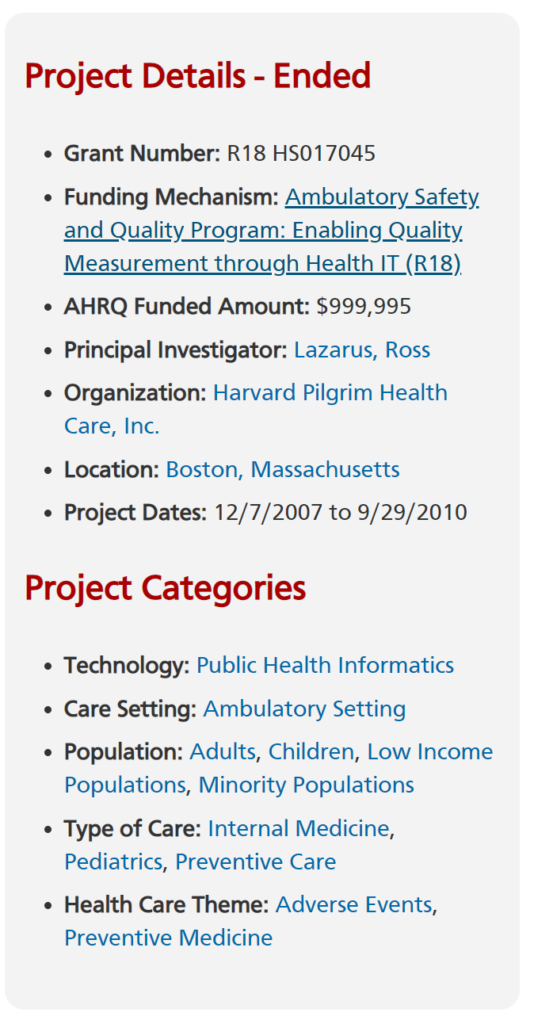“Let no one deceive himself. If anyone among you thinks that he is wise in this age, let him become a fool that he may become wise. For the wisdom of this world is folly with God. For it is written, “He catches the wise in their craftiness,” and again, “The Lord knows the thoughts of the wise, that they are futile.” So let no one boast in men.”
Corinthians 3:18-21
The refrain that is repeated in public is that vaccine adverse reactions are rare, occurring in 1 in a million Americans.
But few know the source of that errant claim.
For many years, as the source of this number is never given when the claim is made, it had been assumed that this statistic was a reference to the official number put forth by an agency within the Department of Health and Human Services (HHS), Injury Compensation Program, but it is not a rate of vaccine injury.
It is the paltry rate at which vaccine injured Americans are compensated for injury.
The HHS Vaccine Injury Compensation Program reports lays this out clearly:
“How many petitions have been awarded compensation?
According to the CDC, from 2006 to 2017 over 3.4 billion doses of covered vaccines were distributed in the U.S. For petitions filed in this time period, 6,529 petitions were adjudicated by the Court, and of those 4,493 were compensated. This means for every 1 million doses of vaccine that were distributed, approximately 1 individual was compensated.
US Department of Health and Human Services
Since 1988, over 21,303 petitions have been filed with the VICP. Over that 30-year time period, 18,358 petitions have been adjudicated, with 6,947 of those determined to be compensable, while 11,411 were dismissed. Total compensation paid over the life of the program is approximately $4.2 billion.”
Health Resources Services Administration
Vaccine Injury Compensation Program
Vaccine Injury Compensation Data
Most Recent Data Report
National Vaccine Injury Compensation Program Data Report (PDF – 317 KB) – updated November 1, 2019.
Yet the US Centers for Disease Control and Prevention, (CDC) claims this number is the ACTUAL estimated injury rate:
“Any medicine can cause a severe allergic reaction. Such reactions from a vaccine are very rare, estimated at about 1 in a million doses. These reactions happen within a few minutes to a few hours after the vaccination.
As with any medicine, there is a very remote chance of a vaccine causing a serious injury or death.”
Centers for Disease Control and Prevention
Vaccines and Preventable Diseases
Vaccines by Disease
Meningococcal Vaccination: What Everyone Should Know
We contacted the CDC to confirm that that the VICP payment data was the source for their claim that “severe allergic reaction” was 1 in a million doses in the U.S.
Turns out it was not.
No Deception received this response from CDC:
| Subject: | Not Imm publication/Data gp 1 [CDC-343362-D3M1K4] CRM:00065898 |
|---|---|
| Date: | Tue, 17 Dec 2019 16:25:50 +0000 |
| From: | NIPINFO (CDC) <NIPINFO@cdc.gov> |
| To: |
Dear Ms. Taylor,
Thank you for contacting the CDC. The source of the data that you are asking about is from the attached publication by M. McNeil and others. As stated in the publication, health care data from the Vaccine Safety Datalink (VSD) was analyzed to determine rates of severe allergic reactions. A 2003 study by K. Bohlke and others found similar results (see https://www.ncbi.nlm.nih.gov/pubmed/14523172) For information about the VSD, please see this link: https://www.cdc.gov/vaccinesafety/ensuringsafety/monitoring/vsd/index.htmlThank you!
Toscha R. Stanley
LCDR, USPHS
Communication and Education Branch (CEB)
Immunization Services Division
Centers for Disease Control and Prevention
The research attached is not on all “severe allergic reactions,” it is only for immediate anaphylaxis. CDC is conflating one type of serious vaccine adverse reaction, with all serious vaccine adverse outcomes.
CDC has badly misused this number repeatedly in its own vaccine safety claims, and the false safety claim has been picked up by institutions across the country.
A Google search of the phrase, “Any medicine can cause a severe allergic reaction. Such reactions from a vaccine are very rare, estimated at about 1 in a million doses,” returns 92 responses. No citation is provided by CDC on its site for this number, nor on any of the other web sites repeating this claim.

Not only does CDC know that the 1 in a million doses is a false claim, they are hiding the 1 in 39 doses that is likely the true vaccine adverse reaction rate.
In 2010 the U.S. Department of Health and Human Services (HHS) conducted a study by the Federal Agency for Health Care Research (AHCR) with the Harvard Pilgrim HMO. The examination of digitized medical records found that 2.6% of vaccines administered resulted in injuries. A rate of 1 in 39, rather than a rate of 1 in 1,000,000, as the CDC claims. The report also found that clinicians typically approximately see 1.3 vaccine injuries per month in their practices.
“Summary:
Adverse events from vaccines are common but underreported, with less than one percent reported to the Food and Drug Administration (FDA). Low reporting rates preclude or delay the identification of “problem” vaccines, potentially endangering the health of the public. New surveillance methods for drug and vaccine adverse effects are needed. Proactive, spontaneous, automated adverse event reporting embedded within electronic medical records (EMRs) and other information systems has the potential to speed the identification of problems with new vaccines and yield more careful quantification of the risks of older ones.
The Electronic Support for Public Health – Vaccine Adverse Event Reporting System (ESP: VAERS) project sought to create a generalizable system to facilitate detection and clinician reporting of vaccine adverse events. EMRs available from all ambulatory care encounters in a large multi-specialty practice were used. Every patient receiving a vaccine was automatically identified and for the next 30 days their health care diagnostic codes, laboratory tests, and medication prescriptions were evaluated for values suggestive of an adverse event.
The main objectives of this project were to:
1. Identify required data elements and develop systems to monitor ambulatory care EMRs for adverse events following vaccine administration.2. Prepare and securely submit clinician approved, electronic reports to the national Vaccine Adverse Event Reporting System (VAERS).
3. Comprehensively evaluate ESP: VAERS performance in a randomized trial and compare it with existing VAERS and Vaccine Safety Datalink data.
4. Distribute documentation and application software developed and refined in 1 and 2 that are portable to other ambulatory care settings and to other EMR systems.
U.S. Department of Health & Human Services
Preliminary data were collected from June 2006 through October 2009 on 715,000 patients. A total of 1.4 million vaccine doses (of 45 different vaccines) were given to 376,452 individuals. Of these doses, 35,570 possible reactions (2.6 percent of vaccinations) were identified. This is an average of 1.3 events per clinician per month. The team concluded that it is possible to automatically detect adverse events in defined ways, and to electronically report them to VAERS. Decision support functions can be repurposed, so that in addition to detecting reportable diseases, they can detect events that are related to vaccination, as potential vaccine adverse events.”
Agency for Healthcare Research and Quality
Health Information Technology
Grant Final Report
Grant ID: R18 HS 017045
Electronic Support for Public Health–Vaccine Adverse Event Reporting System (ESP:VAERS)
Inclusive dates: 12/01/07 – 09/30/10
Principal Investigator: Lazarus, Ross, MBBS, MPH, MMed, GDCompSci
Team members: Michael Klompas, MD, MPH
Performing Organization: Harvard Pilgrim Health Care, Inc.
Project Officer: Steve Bernstein
The report also confirmed that, “fewer than 1% of vaccine adverse events are reported” to the Vaccine Adverse Event Reporting System (VAERS).
Not only did they find an astronomically high vaccine reaction rate, they found that it was possible to digitally detect such adverse outcomes, so that patients could be treated more effectively for their reactions.
The intent of the 1 Million Dollar project carried out by AHRQ was to introduce a new Artificial Intelligence component to the VAERS database, so that such adverse outcomes would be detected, however, when CDC, that runs the VAERS program, learned of the outcome of the project, the roll-out of the AI program was cancelled, and CDC simply stopped returning phone calls to its sister agency AHCR .
“Unfortunately, there was never an opportunity to perform system performance assessments because the necessary CDC contacts were no longer available and the CDC consultants responsible for receiving data were no longer responsive to our multiple requests to proceed with testing and evaluation.”
U.S. Department of Health & Human Services
Agency for Healthcare Research and Quality
Health Information Technology
Grant Final Report
Grant ID: R18 HS 017045
Electronic Support for Public Health–Vaccine Adverse Event Reporting System (ESP:VAERS)
Inclusive dates: 12/01/07 – 09/30/10
Principal Investigator: Lazarus, Ross, MBBS, MPH, MMed, GDCompSci
Team members: Michael Klompas, MD, MPH
Performing Organization: Harvard Pilgrim Health Care, Inc.
Project Officer: Steve Bernstein
Results, Page 6
CDC ghosted on Lazarus, and the plan to find vaccine adverse reactions was abandoned.

